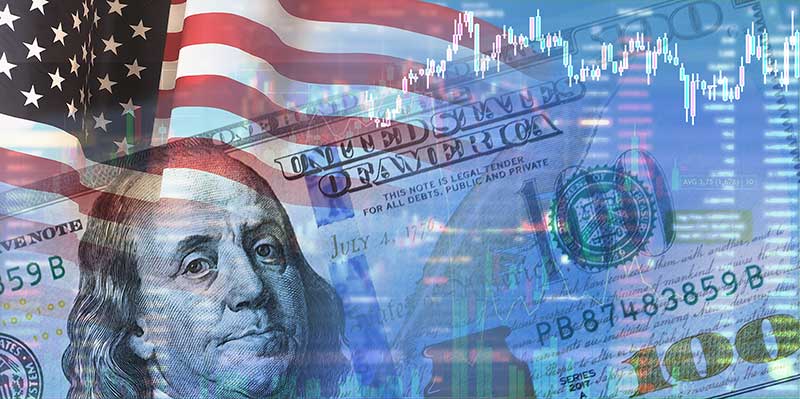
Will America Face Another Banking Crisis Like 2008?
BY JOSEPH AMATO
The answer to this question truly depends on the future actions of the Treasury Department, the FDIC, and the Federal Banking Committee, which currently controls our interest rates.
Were the failures of Silicon Valley and Signature Bank self-inflicted, due to executive mismanagement or greed, or a byproduct of the current fed policy?
There is a cause-and-effect dilemma in play here that needs to be fully understood.
Silicon Valley Bank was an enigma at its core, whereby the majority of its depositors were hedge funds, internet companies, and high-tech start-ups with assets of $175 billion. Most of its customer accounts (well over 85%) held over $250,000 in their respective bank accounts. In this case, the Silicon Valley Bank depository accounts were far above the FDIC deposit guarantee threshold of $250,000.
The depository portfolio at Silicon Valley Bank is the inverse of most other lenders in the country, usually representing 80% of their depositor accounts at under $250,000 and less than 20% of their depositor accounts at over $250,000.
Why is this important?
The federal government made a hasty decision within forty-eight hours of the Silicon Valley Bank’s failure to rescue all depository accounts at $250,000 and below through the usual activities of the FDIC depository guarantee limits and those above the $250,000 limit through supplemental federal support. That was a welcome action by the hedge funds, internet companies, and high-tech start-ups overjoyed with the federal bailout. But at what cost to the taxpayers?
The first response from the White House was that they were going to use funds available to reimburse these excessive depository accounts from fees collected from the banking industry for future bank difficulties. It will be interesting to see if billions of dollars are available to cover all Silicon Valley Bank depositor losses in this emergency banking account.
Subsequently, the Fed created the Bank Term Funding Program to offer banks, credit unions, savings associations, and other institutions with high-quality Treasury Notes, Agency Debt, and Mortgage-Backed Securities in their portfolio the ability to secure one-year term loans to ensure the ongoing liquidity of these institutions and avoid the fears associated with another bank failure.
The first thing that occurs when a bank is feared insolvent is a run on the bank by its depositors to withdraw the money in their accounts or transfer their money to another institution. Silicon Valley Bank had this occur on March 9th when rumblings of lack of liquidity were heard in the marketplace. Depositors began requesting their funds be withdrawn or transferred, and the bank did not have the cash on hand to honor their requests. As a result, around midday on March 10th, the bank closed operations completely.
Signature Bank faced the same dilemma on Friday, March 10th, when fears caused by the failure of Silicon Valley Bank spread rapidly, and a run of over $10 billion in deposits occurred from its customer base of New York real estate operators, law firms, and cryptocurrency clientele. But the collapse of Silicon Valley Bank was not the only problem facing Signature Bank, one of only a handful of lenders that allowed customers to deposit crypto assets. [The first sign of an impending insurmountable problem was the collapse of FTX and the ensuing plunge in crypto value.] Signature Bank shut down on Sunday, March 12th.
So, you may be asking, where was the cash, and what happened to the money collected in each depositor’s account to put these institutions into this catastrophic predicament?
When depositors begin to withdraw large amounts of money for fear of bank failure, the bank has to sell its long-term Treasuries and securities purchased at a lower interest rate environment over the past several years at a loss to cover the withdrawals. The market value of these Treasuries and securities dropped sharply amid the high inflation and the Fed’s rising interest rate environment, making it difficult to sell and cover the losses, thus exacerbating the liquidity crisis within the bank.

It may be in the best interest of the banking industry and the overall economy that the Fed begins to pause its aggressive campaign of raising interest rates to curb inflation. Doing so will allow the banks to build up liquidity in the marketplace as they start selling off Treasuries and securities purchased previously, and they must sell at a current loss. With all that said, the Fed may refuse to curb its quest to defeat inflation by increasing interest rates. However, they may respond accordingly by reducing the rate of increase from a half point to a quarter point.
The good news for the depositors at most U.S. banks and other financial institutions is that most banks and financial institutions have more than enough liquidity and available capital to offset any immediate “bank run” on deposit withdrawals. Although there is no guarantee that the current anxiety will not spread, it appears that the risk of contagion is minimized each day we put Silicon Valley Bank and Signature Bank in the rear-view mirror.
For those who were not aware of the immense nature of these bank failures, here are the top three in U.S History:
- Washington Mutual
2008 – holdings at the time of loss were $307 billion. - Silicon Valley Bank
2023 – holdings at the time of loss were $209 billion. - Signature Bank
2023 – holdings at the time of loss were $118 billion.
In our current banking system, the light speed that bad news can travel may sometimes be counterproductive and, most times, injurious to those who fear losing their deposits in a troubled bank or financial institution. It is a possibility that the fears generated at Silicon Valley Bank were internal, causing a “bank run” that helped some of the larger depositors if they knew that the federal government would bail out all depositors at the bank. If this was the case, I hope those involved would be severely punished and not receive their deposits in total.
It is the responsibility of all banks, financial institutions, the Fed, and the Treasury to work in lock-step to maintain their respective portfolios to avoid liquidity issues, future panic, and any possible financial system manipulation for the benefit of a few. We cannot afford another crisis like 2008 that cost the taxpayers and injured the credibility of our financial system.


